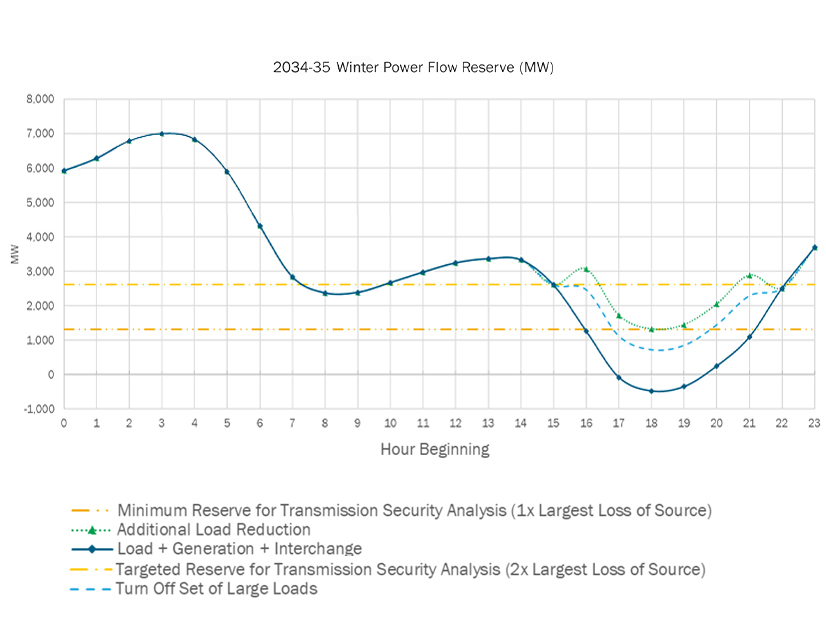In response to stakeholder criticism, NYISO has updated its draft Reliability Needs Assessment to include an executive summary and appendices, and extended the comment period on the report to Oct. 14.
“We definitely heard stakeholders’ concerns about not having enough time to review the complete report with the executive summary,” Ross Altman, senior manager of reliability planning for NYISO, told the Transmission Planning Advisory Subcommittee on Oct. 9. “So, we tried to shift the schedule up a little bit on that.”
Altman said NYISO would try to address the comments for the next version of the RNA, to be presented Oct. 21 to the Electric System Planning Working Group meeting and Oct. 24 to the Operating Committee.
“As one of the people who asked for more time, I want to say thank you for giving us a little bit more time; it’s appreciated,” said Kevin Lang of Couch White.
Stakeholders spent most of the meeting discussing the results of the RNA, which predicted that on a peak summer day with expected weather conditions (95 degrees Fahrenheit), New York City would be deficient by 17 MW for one hour in 2033, rising to 97 MW for three hours in 2034. The analysis suggests that the ISO needs to declare an official reliability need for the city’s capacity zone. (See NYISO Draft RNA Finds Reliability Need for New York City.)
The discussion focused on whether that was actually significant, or if it was a result of uncertainties in NYISO’s data and assumptions.
“So the results point to a 17-MW, one-hour deficiency 10 years from now?” asked Marc Montalvo, CEO of Daymark Energy Advisors. “Is that statistically different from zero?”
Montalvo pointed out that the given the magnitude of the system and the uncertainties, 17 MW might just be statistical “noise.” He asked Altman how to interpret that “in an actionable way.”
“Do we run out and do something, or do we say, ‘Look, this needs five more years of information before we even start to worry about it’?” he asked.
Altman said that before any solution was solicited, NYISO would re-evaluate if the need still existed based on updated information. He pointed out that there were resources in development that could come online in the next 10 years but were not far enough along to meet NYISO’s base case assumptions.
“We have an opportunity to re-evaluate next year to see if the updates would make the problem go away,” Altman said. “And then in the evaluation of solutions, we do consider which solutions are best suited for meeting this need, but we have to have a solution. … We can’t just show there’s a reliability violation and do nothing about it.”
Crypto Companies Pivoting to AI
Stakeholders also revisited NYISO’s assumption about the flexibility of cryptocurrency mining and hydrogen-producing loads.
The ISO had issued a preliminary finding of a statewide shortfall of as much as 1 GW by 2034, but it revised its assumptions about the flexibility of such large loads during peak hours, which reduced the loss-of-load expectation to below 0.1. (See NYISO: Large Load Flexibility Eliminates 2034 Shortfall Concern.)
But there is a very real possibility that these loads will not be as flexible as NYISO assumes. Cryptominers are increasingly shifting their facilities’ operations to training artificial intelligence.
“There is an increasing interest among cryptocurrency mining facilities to actually switch over to doing AI, which, because of their service level agreements, is much less flexible,” one stakeholder noted. “Their willingness to do one and not the other depends on, to a large extent, the price of Bitcoin or whatever other cryptocurrency they’re mining.” A data center’s stated purpose as a cryptomining operation had very little bearing on whether it would remain as one in the future, they said.
Reuters reported in August that technology companies are seeking the energy assets held by crypto miners as they race to secure electricity supply for AI and cloud data centers, estimating that about 20% of cryptocurrency could pivot to AI by the end of 2027.
“We do monitor [that], but we do recognize that we don’t know exactly how they continue to evolve,” Altman said. “Any specifics you have on that, or research you’d like to share, please email” the ISO.
